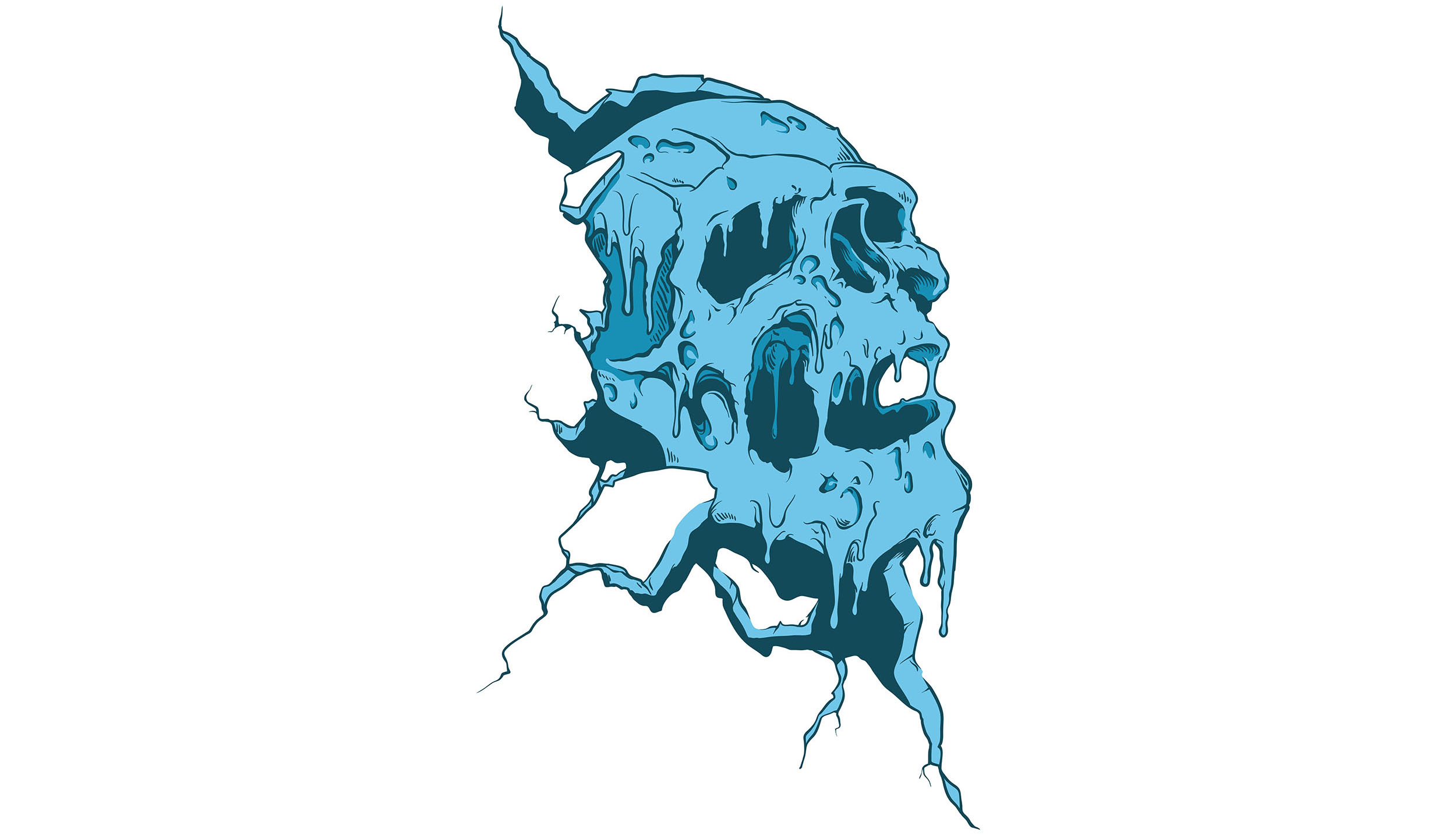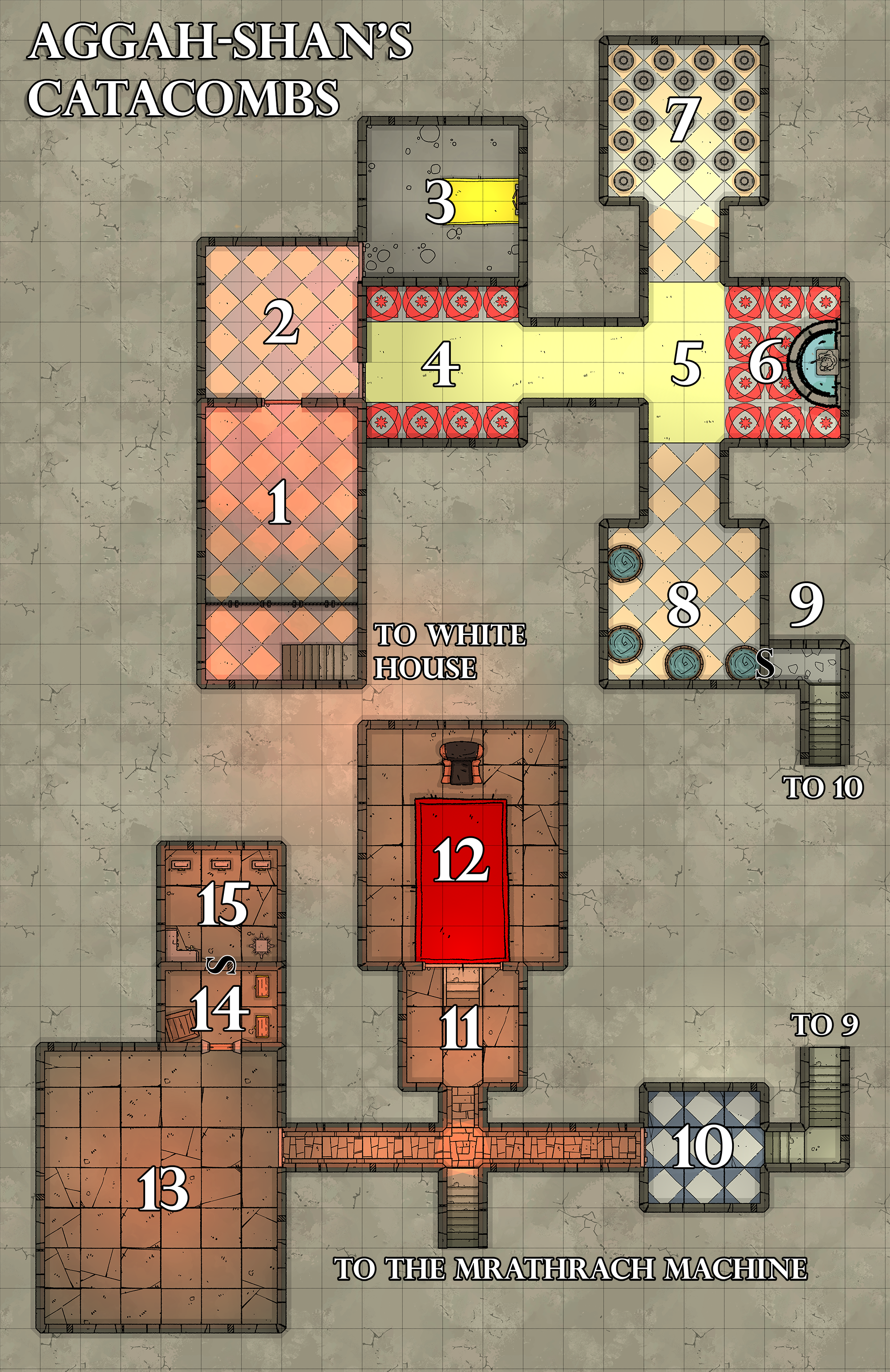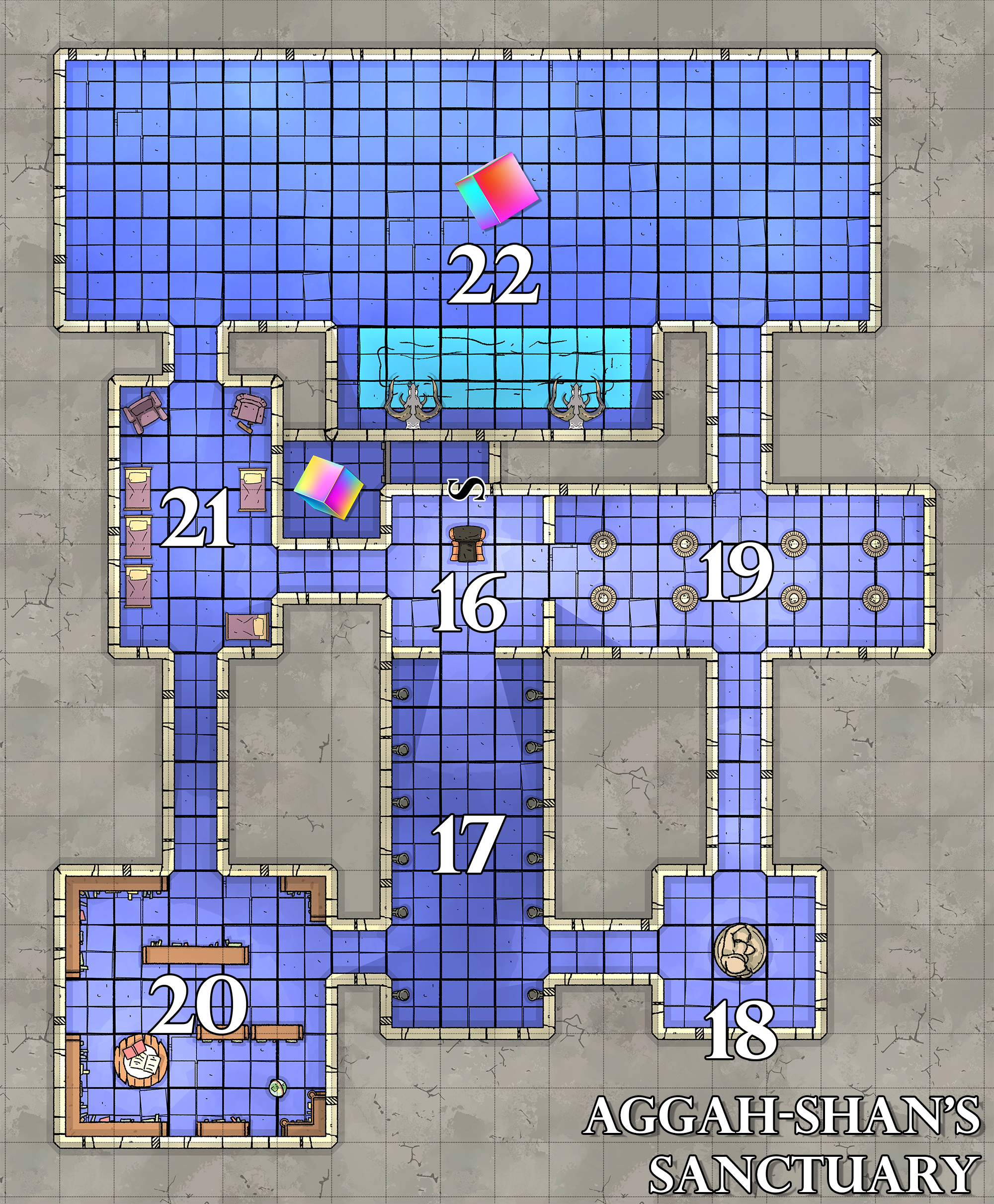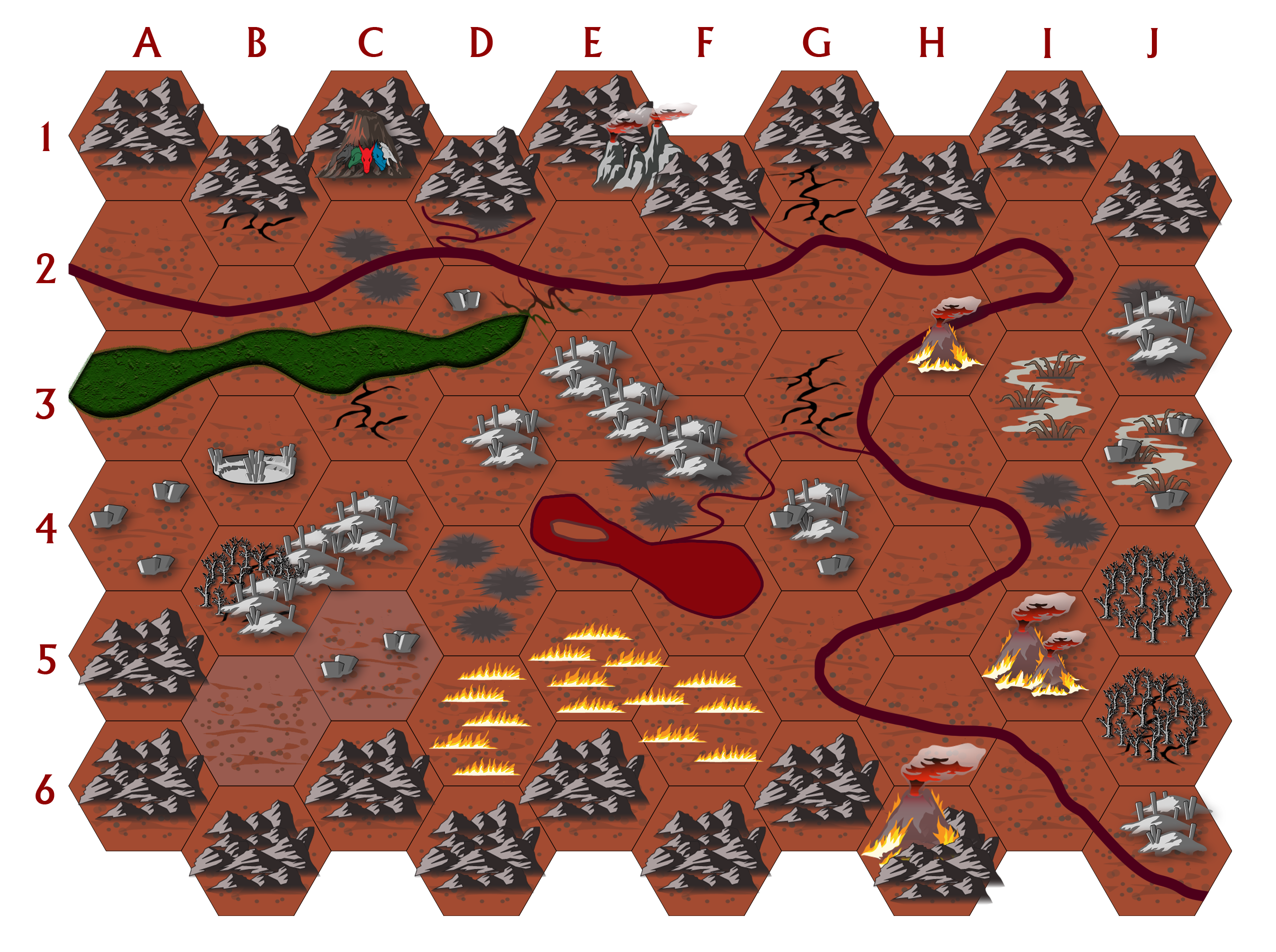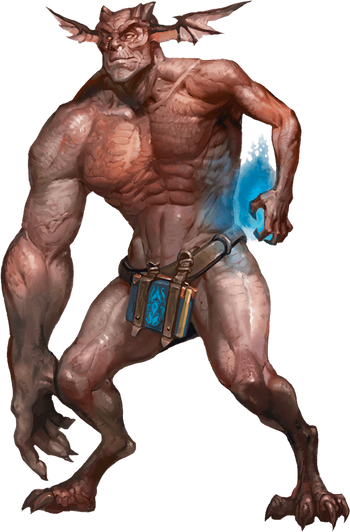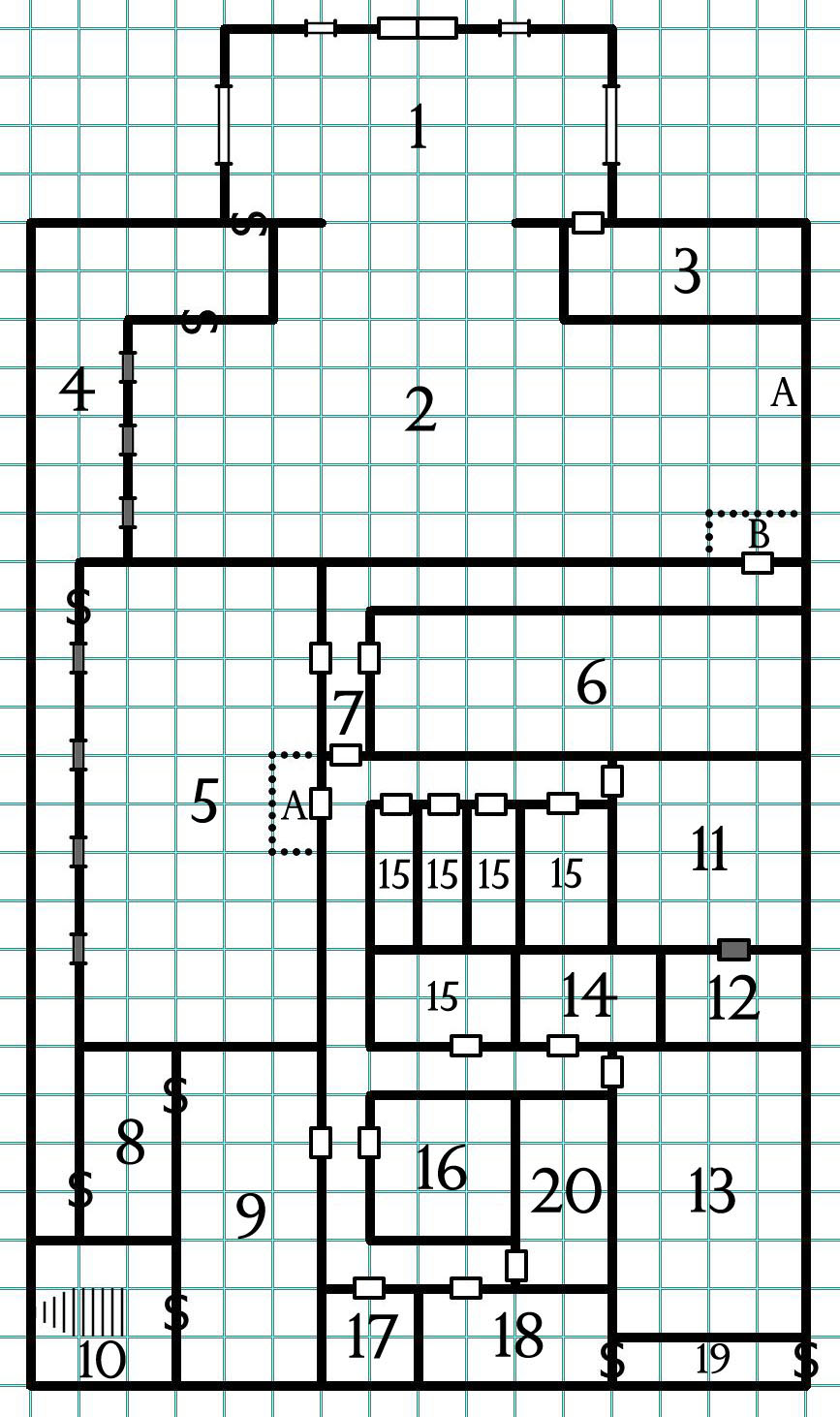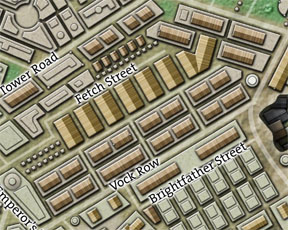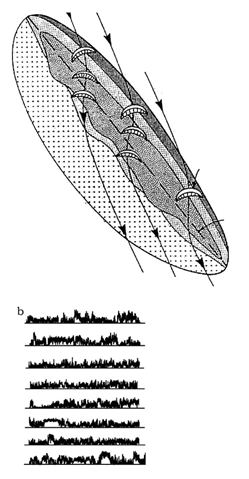AREA 1 – ILLUSORY WALL
The stairs from the White House bottom out into a small room with an iron chest.
ILLUSORY WALL: The wall immediately to the north of the stairs is illusory, created with a major image spell (cast using a 6th level spell slot to make it permanent). A DC 21 Intelligence (Investigation) is required to discern the illusion for what it is.
WIGHTS (12): There are 12 wights (MM, p. 300) behind the illusory wall. They attack when the trap on the iron chest is activated (they can see through the wall without any problems) or if anyone passes through the wall.
IRON CHEST: Empty. It is locked (DC 13) and trapped. (DC 18 to detect). Anyone touching the chest must succeed at a DC 14 Constitution saving throw or become paralyzed. In addition, they exude a carrion stench for 2d6+2 rounds that causes all creatures within a 10-foot-radius to become poisoned for 1d6 rounds unless they succeed at a DC 14 Constitution saving throw. (Characters must repeat the saving throw for each round that they remain within 10 feet of the stench-exuding victim.)
AREA 2 – THE DOOR CHOICE TRAP
The north door in this room is gilded with silver. The south door is gilded with gold. Each door has a magic mouth.
ENTRANCE SCRIPT: Entering the room from Area 1 triggers the following script from the magic mouth. Leaving the room and re-entering will trigger the script again.
- Both Doors: Each of us will ask a riddle. To pass us you must answer true.
- Door of Gold: One shall always tell the truth.
- Door of Silver: One shall tell a lie.
- Both Doors: One question you may ask; then answer must be given.
FALSE SOLUTION: It’s a trick. If asked, “Will the other door tell me yours is the right path?” (or some similar circumlocution), then the Door of Silver will say “Yes” and the Door of Gold will say “No” (logically indicating that Silver is the correct door). But opening either door will trigger a fireball trap (14d6 fire, DC 20 Dexterity saving throw for half damage; Detect DC 14).
TRUE SOLUTION: Ask a door, “What is your riddle?” Then answer the riddle accurately and the door will open safely.
GOLD’S TRUE RIDDLE:
Do not begrudge this,
For it is the fate of every man.
Yet it is feared,
And shunned in many lands.
Causes problems, and sometimes gaps,
Can hobble the strongest, and make memory lapse.
What is this danger we all face?
For being part — of the human race.ANSWER: Old age.
SILVER’S TRUE RIDDLE:
With this you can do wondrous things.
Look at things close or far away.
You can see things big,
Or you can see things small.
Or maybe you don’t see them at all.
I come in many colors and hues,
Sometimes green and sometimes blue.
And when I’m read — it’s not from shame.
But from something with a different name.ANSWER: Eyes.
AREA 3 – WIGHTS, GHASTS, AND A FALSE DOOR
There are 6 wights (MM, p. 300) and 6 ghasts (MM, p. 148) in this room.
FALSE DOOR: Fashioned of copper. Touching the door triggers a chain lightning trap (10d8 damage, DC 20 Dexterity saving throw for half damage, leaps to 6 additional targets; Detect DC 16).
AREA 4 – ANTECHAMBER
A cream-colored carpet runs across a beautiful floor of crimson-patterned tile. A picture of a young man hangs on the north wall; a picture of a ghastly, skeletal figure hangs on the south wall.
NORTH PICTURE: Depicting a youth with chocolate brown hair, darkly tanned features, and dressed in robes of blue silk. Purple lightning dances between the fingers of an out-stretched hand. (This depicts Aggah-Shan as he was in life.)
SOUTH PICTURE: Desiccated features, but wearing the same robes of blue silk. The figure is wreathed in flame, with the sun limned in eclipse behind him. (This depicts Aggah-Shan as a lich.)
AREA 5 – BLADE BARRIER TRAP
TRAP: Any living creature entering the 10’ x 10’ area between Area 4 and Area 6 triggers a blade barrier which blocks all four directions out of the 10’ x 10’ area. This simultaneously triggers the trap in Area 6.
- Magical trap
- 6d10 slashing damage (DC 20 Dexterity saving throw for half)
- DC 14 Intelligence (Investigation) check to detect the trap.
- DC 20 Intelligence (Arcana) to identify the nature of the trap.
- A dispel magic spell permanently disables the trap.
AREA 6 – ULULATING FOUNTAIN
A statue of a wraith-like maiden with her mouth gaped wide serves as a fountain, pouring a black-tinted water into the stone pool below.
UNHOLY WATER: The water in the pool is unholy water (30 vials worth).
TRAP: Any living creature touching the water or the statue triggers a trap.
- Magical trap
- DC 16 Intelligence (Investigation) to detect the trap.
- DC 14 Intelligence (Arcana) to identify that the trap will transform the water; DC 18 check reveals the full properties of the trap.
Poison Cloud: The water emerging from the siren’s mouth is converted into a poison cloud. (DC 16 Constitution saving throw or suffer 4d6 poison damage and become poisoned; the saving throw must be repeated each round.) The cloud expands 10 feet per round to a maximum radius of 60 feet (filling this entire level out to Area 2).
Siren’s Song: The statue begins ululating a siren’s song. Living creatures within hearing must make a DC 16 Wisdom saving throw each round or become captivated, moving towards the fountain and then drowning themselves in it. (Those moving through danger — such as the blade barrier in Area 5 or the poison cloud — have advantage on the saving throw.)
Alerting the Complex: The siren’s song will bring any wights and ghasts from Area 3 or Area 10 that are still alive. Everyone else in the complex will maintain guard positions, but will be alerted.
AREA 7 – VASES OF LITHUIN
A collection of nineteen vases placed on pedestals around the room Some are fluted ceramics, while others are more finely crafted and crystalline in nature.
INTELLIGENCE (HISTORY):
- DC 18: These are Lithuin vases. Incredibly rare. Individual vases are worth 1,000 gp each.
- DC 26: This collection specifically demonstrates the evolution of Lithuin vase-craft. It’s unusually complete, and its collected value would be doubled (to 38,000 gp).
INTELLIGENCE (HISTORY) or (INVESTIGATION) – DC 20: The vases are covered in Lithuin runes (now undecipherable), but two of the vases also have a different symbol carved on their bottom:
DM Background: The symbol is that of the Shuul (Ptolus, p. 126). These vases were purchased from the Shuul (who make regular archaeological expeditions to Lithuin).
LITHUIN
Lithuin is a semi-legendary city that was inhabited by Titan Spawn who “sailed from beyond the sea.” They were specialists in the arts of kaostech. The location of the city was long-lost and many scholars believed it never actually existed. Various chaos cultists, however, have recently rediscovered it, and the Shuul have also come into possession of its secret location.
AREA 8 – COPPER FOUNTAINS
Several shallow copper basins are on the floor of this area. Other basins are suspended from the ceiling or built out from the walls. Copper tubing runs in tangled mazes throughout the chamber, gushing forth with multi-hued liquids here and there, creating kaleidoscopic pools of effervescent hues.
SECRET DOOR (Detect DC 15): Twisting one of the spigots causes a large basin to drain and then spin out of the way, revealing the passageway to Area 9 behind it.
Playtest Tip: Although this may initially appear to be the only route to the lower levels of Aggah-Shan’s Catacombs — in which case having a mandatory skill check to get down there would be a questionable choice — in practice these catacombs can also be approached from the OTHER direction (exploring up out of the Mrathrach Machine). In addition, triggering an alarm will cause the wights and ghasts in Area 10 come up; they will leave the secret door open, revealing its location.
AREA 9 – WHIRLING POISON BLADES
The stairway is filled with poisoned blades that come whirling out of razor-thin slits in the walls. Putting any weight on five of the stair treads will trigger the trap (which remains in motion for 5 minutes).
- Mechanical trap
- DC 12 Wisdom (Perception) check to notice the razor-thin slits in the wall.
- DC 14 Intelligence (Investigation) to identify the trap; DC 16 identifies 1d4+1 trigger treads; DC 18 identifies all five trigger treads.
- DC 16 Dexterity (Thieves’ Tools) to disable.
- +8 attack bonus, 3d10 slashing damage, DC 14 Constitution saving throw or 2d6 poisoned damage. Targets all characters on the stairs when triggered.



